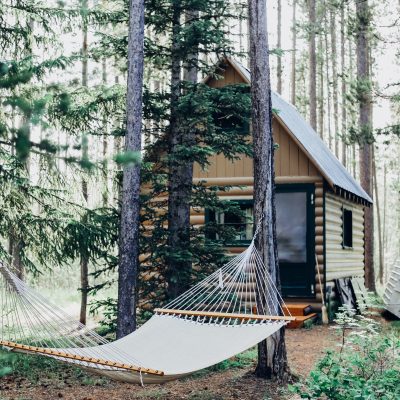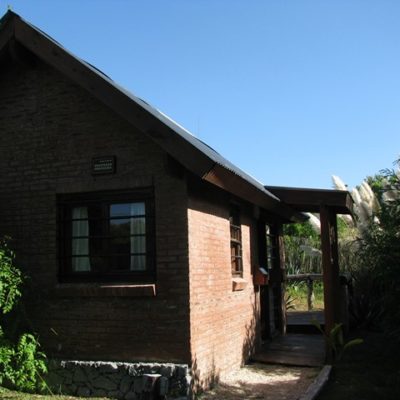
Creating Location-Independent Income Sources
August 10, 2011 | Building Your Nomadtopia, Money, Travel Logistics, Work & Business
A few weeks ago I wrote a post outlining 7 Steps to a Life of Travel. It’s my attempt to break down a complex process into manageable chunks—but there’s no question that there are actually a lot of challenges lurking within each of those seven steps! I’ll be writing a more in-depth post for each step. Here’s Step 1: Make a Money Plan.
Step 1 is arguably the most difficult for many people. It’s hard to write about, too! To put this post together, I’ve been thinking back on my own experiences. I have been lucky so far in my own quest for location-independent income. I saved enough money to travel for nine-plus months without needing any additional source of income. Then, when my savings were running low, I was able to transition to working online as an editor, using skills and contacts I already had.
That work still serves me well, but for a number of reasons it’s time to revisit my own money plan. First, I want to have some sources of income that will pay me even when I’m not actually at my desk editing, which means creating some products I can sell online (or ramping up my income through affiliate commissions). Second, one of the main priorities for the next year is to help Roberto transition to a location-independent source of income as well.
So here’s more information about what’s worked for me (or not) thus far, and considerations that anyone (including me and Roberto!) should keep in mind during the process of creating location-independent income sources.
Save Money
First, no matter what your plans are, it’s really crucial to have some money saved before you take the leap and quit your job, sell your house, leave the country, or whatever less-extreme plans you have in mind. There are a lot of unknowns in this kind of lifestyle, so it’s always a good idea to head out with an emergency fund in place to handle any unexpected situations.
Of course, if you’re not planning to work or have any other source of income while traveling, you’ll need to have enough money saved to cover all of your travel and living expenses. How to determine how much money you need? When I was planning my round-the-world trip, I started by researching places I wanted to go and getting a handle on the average I might spend per day in each location/region/country. (To start, check out “money & costs” under Practical Information for any country in Lonely Planet’s destination guide.)
I multiplied those figures by the amount of time I thought I might spend in each place, and also looked at when I thought I wanted to start traveling and how much money I thought I could save by then. I started looking at airfares, plus travel insurance and additional expenses like temporary storage for the stuff I was leaving behind.
Since I didn’t want to come back with no money left, I also factored in a little extra money to tide me over during my reentry to life back home (at the time I had no idea what I’d be doing after my trip). All told, I saved about $12,000 for what turned out to be an 8.5-month RTW trip in 2004-2005. I even came home with a couple thousand in the bank, if I remember correctly.
If you’re saving to build up an emergency fund, rather than have enough money to sustain you without working at all, your strategy could be similar, but use the above figures to calculate how much you’d need to cover you for 3-6 months, for example, based on the costs you determined above.
Tips for Saving Money
I think it’s worth noting that not only did I save $12,000 over 2.5 years, I did it while I was also paying off credit-card debt, living in San Francisco (an expensive city), and making less than $40,000/year. There are a ton of websites that provide lots of awesome advice for saving money, so I won’t reinvent the wheel here. (A few that really helped me are The Simple Dollar and WiseBread.)
2016 Update: One of the tools I am obsessed with now is You Need a Budget* [This is my affiliate link, which means we both get a month free if you sign up for a paid subscription!]. This fabulous software has helped me look at money in a whole new way and save for everything from the next set of plane tickets to apartment repairs to quarterly health insurance bills—even with extremely variable income.
The most important tip I have for saving money for travel (or for anything that you really, truly want) is to think about it. All. The. Time. Every time you think about spending money on something (especially the little stuff that adds up before you realize it), stop and remind yourself what it could be paying for instead. I was constantly telling myself things like, your choice: dinner out, or a night in a beach bungalow in Thailand. A new sweater, or a ride on a camel in India. The money I’m about to spend on xx is enough to pay for a private room instead of staying in a hostel when I arrive in Peru.
These vivid, concrete reminders often kept me from buying a snack on the way home from work, splurging on gourmet items at the grocery store, or having another drink at happy hour (or I’d even skip happy hour entirely).
The other tactic that’s helping me immensely right now is to remember that everything I buy now, I’ll have to figure out what to do with when I leave Buenos Aires. If it’s not something I absolutely need right now, and I can’t imagine taking it with me or it being worth storing somewhere, I’m much better off not buying it at all. Less stuff to worry about, and more money in the bank. Win-win.
It can also be helpful to have visual reminders of what you’re working toward. Use a picture of a place you’re dreaming of going as your desktop wallpaper, and keep one in your wallet too, so you’ll see it every time you’re about to spend money. Keep asking yourself: Is this getting me toward my goal of traveling the world/moving abroad/[insert your awesome goal here]?
I spent a couple years planning and saving for my round-the-world trip, and again before leaving to live abroad, but there is no question that eventually you need to just GO. Despite your best calculations, you can’t really know how much money you need, or what will happen once you’re on the road. Some might even argue that it’s better to have less of a safety net, because it pushes you to experience more and try more (check out this post from Wandering Earl, where he says that although it’s certainly a good idea to have some financial padding, “your open mind is far more valuable than an extra few thousand dollars in your bank account”—so true!).
Making Money on the Road
For many people, saving money is probably a lot easier than trying to figure out how to make money on the road. Whether you should actively work to make money on the road really depends on whether travel is your absolute top priority. Virtually any money-making venture you have in place will take some time away from traveling, soaking up your surroundings, and having awesome experiences. If you want to be 100 percent present where you are, I highly recommend not working. The freedom is simply unmatched.
Not needing to work while you’re on the road also usually means you can travel with fewer expensive gadgets (I didn’t take anything more expensive than my digital camera on my extended travels) and not have to worry so much about being constantly connected (which allowed me to easily do things like a 10-day silent meditation retreat in Thailand).
If, however, you want to have the flexibility to be able to be on the road indefinitely, you’ll eventually have to figure out how to make some money. Some people happen upon opportunities to teach English, participate in seasonal harvests, or work at a restaurant, bar, or hotel, but it’s probably not something you can completely count on as a source of income.
For most people who want to balance travel and work to maintain this lifestyle for the long haul, the ideal scenario is to find something you really enjoy doing that can be done remotely. There is so much information online these days about this that I won’t go into many particular details here, but I will share a little from my personal experience.
I started my editing business after returning from my round-the-world trip. I was able to capitalize on my professional background and existing relationships to bring in clients, and I kept this business running in the States for nearly two years before I moved to Argentina. By the time I left the U.S., I was confident that I had a solid base for my business that would continue to support me abroad, and I was pretty sure that the added distance wouldn’t have any negative impact on my work (it hasn’t).
I highly recommend that to start out, at least, you maximize on any skills and contacts you already have, and develop a solid track record for making money before you hit the road. If you start a new venture at the same time you start your traveling life, you won’t be able to really enjoy your adventure, and you’ll be in a much harder place if things don’t work out. (Again, a very good reason to also have saved up an emergency fund!)
Another thing to consider is that any one-person service-based business you set up will require your constant input in order to make any money. With this model, if you’re not working, there’s no money (a harsh reality I know all too well). If you’re hoping to spend lots of time unplugged or otherwise unavailable, this might not be the best model for you. If it’s the only model you have for now, consider this fact as you set your rates and make your travel plans, and consider finding someone to help out when you’re not available. You might also want to find ways to make money that aren’t tied to trading time for dollars, such as creating and selling digital products (e-books, online courses, etc.). Setting up multiple sources of income keeps things interesting and is typically a better plan than having all your eggs in one basket.
Again, if you have dreams of working a four-hour work week while you chill in the Amazon, that’s awesome. I won’t say it’s impossible to do. But it will likely take a lot of groundwork (best done while you’re still in a stable location, with some regular income and a decent Internet connection) to make it happen.
So, where does this leave us? Here’s step #1, broken down into a few clear steps of its own:
- Decide whether you want to work on the road.
- Determine how much money you’ll need to save to support yourself, or how much of an emergency fund you should have in place.
- Before you leave home, establish a fairly reliable source of income that will be able to function and support you while you’re on the road. Consider whether a service- or product-based model works better for you.
Resources
If you’re not sure what you might do to make money on the road, there are a host of fabulous courses and packages out there that can help you figure out what you’re passionate about, find profitable ideas that work for you, and more. Here’s one worth checking out:
- Find Your First Profitable Idea, from Ramit Sethi of I Will Teach You to Be Rich (he wrote a fabulous post for Man Vs. Debt that outlines a lot of his main concepts). Not an affiliate link, since I haven’t gone through this program myself yet.
How’s your money plan going? What has been the biggest challenge for you in completing this step on your way to a life of travel?
Ready for the next step in the 7 Steps to a Life of Travel? Click here to read about Step 2: Plot Your Escape.
Get the Top 10 Logistical Things You Need to do before becoming a nomad
(That Aren't What You Think)
When you download the guide, you’ll also be subscribed to the Nomadtopia newsletter. Your email is safe with me and you can unsubscribe anytime. View our Privacy Policy.




